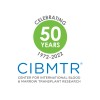
A Study of Atezolizumab Administered Alone or in Combination With Azacitidine in Participants With...
Myelodysplastic SyndromesThis is a multicenter, open-label, Phase 1b study of atezolizumab (anti-programmed death-ligand 1 [anti-PD-L1] monoclonal antibody) in participants who have hypomethylating agent (HMA)-naïve myelodysplastic syndromes (MDS) and are International Prognostic Scoring System-Revised (IPSS-R) intermediate/high/very high-risk, or have MDS relapsed or are refractory (R/R) to prior HMA therapy. The primary objectives of this study are to determine the safety and tolerability of atezolizumab therapy in these participant populations, including treatment in combination with azacitidine.

Bioequivalence & Food Effect Study in Patients With Solid Tumor or Hematologic Malignancies
Hematological NeoplasmsNon-Hodgkin's Lymphoma18 moreThis is a Phase 1, open-label, multicenter, randomized, 2-stage crossover study consisting of 2 phases: Stage I - Pharmacokinetics (Bioequivalence), with an Extension Stage II - Pharmacokinetics (Food Effect) with an Extension This study will enroll approximately 60 subjects in stage I and 60 subjects in stage II with hematologic or solid tumor malignancies, excluding gastrointestinal tumors and tumors that have originated or metastasized to the liver for which no standard treatment exists or have progressed or recurred following prior therapy. Subjects must not be eligible for therapy of higher curative potential where an alternative treatment has been shown to prolong survival in an analogous population. Approximately 23 sites in the US and 2 in Canada will participate in this study.

Volasertib in Combination With Azacitidine in Japanese Patients With Myelodysplastic Syndrome or...
Myelodysplastic SyndromesLeukemia2 moreTo identify the maximum tolerated dose or recommended dose for further development of volasertib in combination with azacitidine in Japanese patients with myelodysplastic syndromes or chronic myelomonocytic leukemia, and evaluate the safety and tolerability, pharmacokinetics and the preliminary efficacy of this combination.

Nivolumab and Azacitidine With or Without Ipilimumab in Treating Patients With Refractory/Relapsed...
Acute Bilineal LeukemiaAcute Biphenotypic Leukemia7 moreThis phase II trial studies the side effects and best dose of nivolumab and azacitidine with or without ipilimumab when given together and to see how well they work in treating patients with acute myeloid leukemia that has not responded to previous treatment or has returned after a period of improvement or is newly diagnosed. Monoclonal antibodies, such as nivolumab and ipilimumab, may interfere with the ability of cancer cells to grow and spread. Drugs used in chemotherapy, such as azacitidine, work in different ways to stop the growth of cancer cells, either by killing the cells, by stopping them from dividing, or by stopping them from spreading. Giving nivolumab, azacitidine and ipilimumab may kill more cancer cells.

HLA-Mismatched Unrelated Donor Bone Marrow Transplantation With Post-Transplantation Cyclophosphamide...
Myelodysplastic Syndrome (MDS)Chronic Lymphocytic Leukemia (CLL)5 moreThis is a multi-center, single arm Phase II study of hematopoietic cell transplantation (HCT) using human leukocyte antigen (HLA)-mismatched unrelated bone marrow transplantation donors and post-transplantation cyclophosphamide (PTCy), sirolimus and mycophenolate mofetil (MMF) for graft versus host disease (GVHD) prophylaxis in patients with hematologic malignancies.

A Study of Epoetin Beta Treatment in Anemic Participants With Myelodysplastic Syndrome (MDS)
Myelodysplastic SyndromesThis is a Phase IV, prospective, multi-center, open-label study to assess the effectiveness and safety profile of epoetin beta (Recormon®) for treatment of symptomatic anemia in adult participants associated with low/intermediate-1-risk MDS. After screening, eligible participants will be treated with epoetin beta as recommended in the approved label and international guidelines for the use of epoetin in MDS participants and the dosage will be adjusted on the basis of erythroid response.

Omacetaxine in Patients With Intermediate-1 and Higher Risk Myelodysplastic Syndrome (MDS) Post...
LeukemiaThe goal of this clinical research study is learn if omacetaxine can help to control myelodysplastic syndrome (MDS). The safety of this drug will also be studied. This is an investigational study. Omacetaxine is FDA approved and commercially available for the treatment of chronic myelogenous leukemia (CML). It is investigational to use omacetaxine in patients with MDS. The study doctor can explain how the study drug is designed to work. Up to 80 participants will be enrolled in this study. All will take part at MD Anderson.

E7070, Idarubicin and Cytarabine in Relapsed AML and High-Risk Myelodysplastic Syndromes
LeukemiaThe goal of this clinical research study is to learn if E7070 in combination with idarubicin, cytarabine, and dexamethasone can help to control the disease in patients with either AML or high-risk MDS that has relapsed. The safety of the drug combination will also be studied.

Liposomal Cytarabine-Daunorubicin CPX-351 in Treating Patients With Untreated Myelodysplastic Syndrome...
Acute Biphenotypic LeukemiaAcute Myeloid Leukemia2 moreThis randomized clinical trial studies liposomal cytarabine-daunorubicin CPX-351 in treating patients with untreated myelodysplastic syndrome or acute myeloid leukemia. Drugs used in chemotherapy, such as liposomal cytarabine-daunorubicin CPX-351, work in different ways to stop the growth of cancer cells, either by killing the cells, by stopping them from dividing, or by stopping them from spreading.

Trial to Assess the Efficacy of a TCR Alfa Beta Depleted Graft in Pediatric Affected by ALL or AML...
Acute Lymphoblastic LeukemiaLeukemia Acute Myeloid - AML2 moreAllocation: Non-Randomized Endpoint Classification: Safety/Feasibility Intervention Model: Single Group Assignment Masking: Open Label Primary Purpose: Treatment Study to assess the feasibility and safety of the infusion of a T cells receptor (TCR) alfa beta depleted graft in pediatric patients affected by malignant and non-malignant hematological disorders and receiving an Hematopoietic stem cell transplantation (HSCT) from a Human leukocyte antigen (HLA) partially matched family donor.
